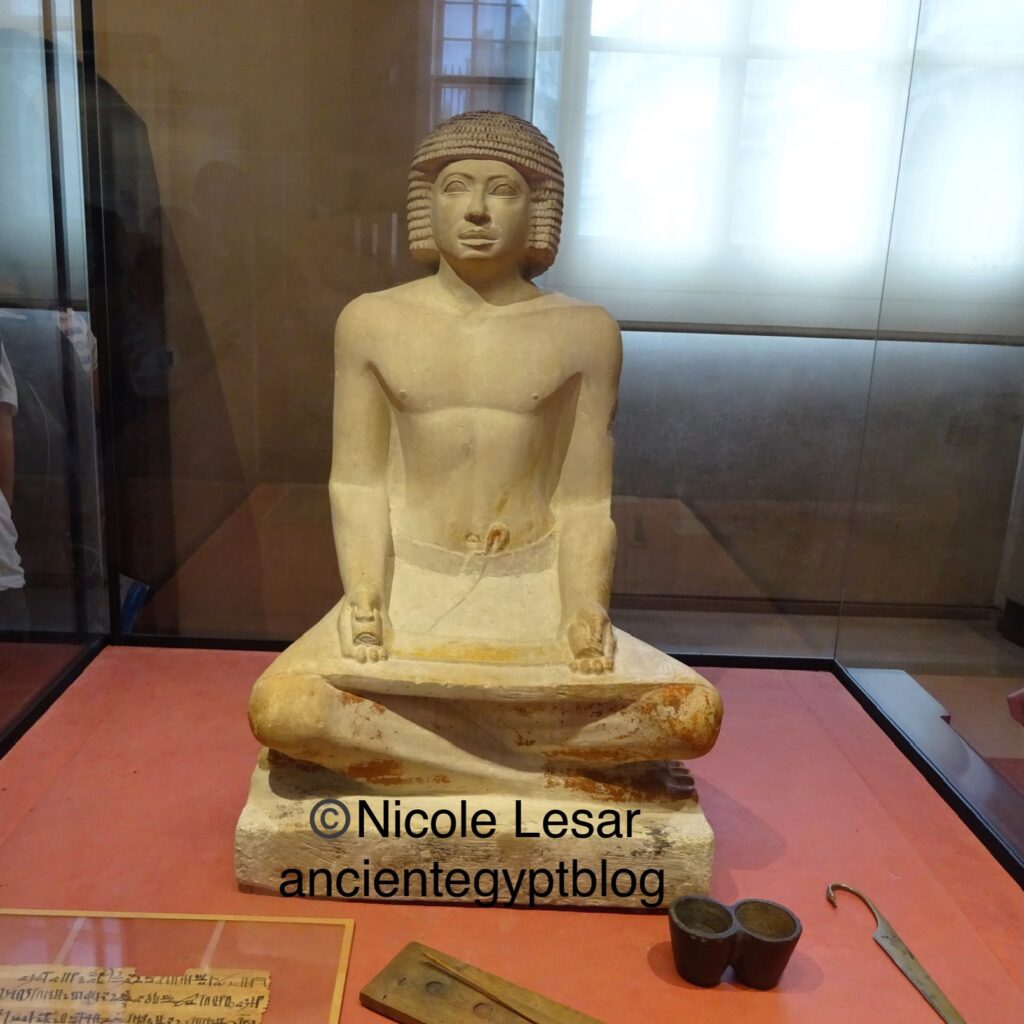
May you (Re) command me to follow you day and night like all those you favor, because I have been proper to the god since (2) I was upon the earth, satisfying him with order every day: I have repudiated evil before him. May you hear (my) request for him every day, like the spirits you made spirits.

May you (all) grant that my ba come forth by day to see the solar disk. Base, to the left (1) An "offering that the King gives" of Ptah South of His Wall, of Sekhmet, beloved of Ptah, of Ptah-Sokar, lord of the secret chamber, and of Osiris, lord of Rosetau. For the ka of the hereditary noble, royal scribe Haremhab, justified. I do not forget the plans of His Incarnation. I am the herald of the judgement council. I am one who informs the Lord of the Two Lands, a successful speaker of every neglected thing, who does not ignore anything the King says. I do not neglect what has been assigned me. I am a guide for everyone, who shows every person his way. I am one who fixes laws for the King, who gives instruction to the court, wise in my speech. I am an exact one of the court: every crime is reported to me - a perceptive tongue, putting it right. May you grant response to a matter in its exactitude. To experts illuminate this artwork's storyīase, to the right (1) An "offering that the King gives" of Thoth, the lord of hieroglyphs, lord of Hermopolis, weigher of truth, conveyor of Re in the night bark. Link to a blog about scribes in Ancient Egypt Showing Signs: Hieroglyphs and Palettes in the Stela of Irtisen View more Listen The youthful face reflects the features seen on many statues depicting Tutankhamun (50.6), and the style of this magnificent life-size sculpture retains some of the softness and naturalism of the earlier Amarna period while looking forward to later Ramesside art. Although the scribal pose exhibits the frontal orientation common to all formal Egyptian statue, it may be appreciated more fully as a piece of sculpture in the round since it has no back pillar. These artistic conventions indicate that the subject has reached the age of wisdom. In this statue the unlined, youthful face is belied by the potbelly and the folds of flesh beneath the breasts. A figure of the god Amun is incised on his forearm, perhaps indicating a tattoo. Over his left shoulder is a strap with a miniature scribe's kit attached to each end. A shell containing ink lies on his left knee. Across his knees he unrolls a papyrus scroll on which he has composed a hymn to the god Thoth, patron of scribes. He sits erect, but relaxed, his gaze slightly down.

By having himself depicted as a scribe, Haremhab declares himself to be among the elite group of literate individuals, thus following a tradition more than a thousand years old of depicting great officials as men of wisdom and learning. This statue was made before Haremhab ascended the throne. He continued to serve during the reign of Aya and eventually succeeded Aya as king. However, Old Kingdom Egyptian lacked a distinct sign for the ẖ sound and the Coptic descendant shows that the original second consonant was indeed the palatalized fricative ẖ not the (alveolo-)palatal sibilant š, ( š being the pool-lake-basin (hieroglyph) in the Egyptian language).Haremhab was a royal scribe and general of the army under Tutankhamun. This reading is found as a phonetic complement using the signs for z and š, leading to the misunderstanding. Often the transliteration "sesh" appears, derived from the mistaken reading sš propagated in the dictionary and books of E. By the Coptic stage of the language, this had lost its glottal stop and ending, reducing to ⲥⲁϧ (pl. A1), the hieroglyph is read as zẖꜣw, probably pronounced or in Old Egyptian, and or following the changes in pronunciation of z in Middle Egyptian and of ꜣ in Late Egyptian. Combined with the determinative for person 𓀀 ( Gardiner no. The scribe equipment hieroglyph is often used as a determinative for items relating to writing or the scribe.


 0 kommentar(er)
0 kommentar(er)
